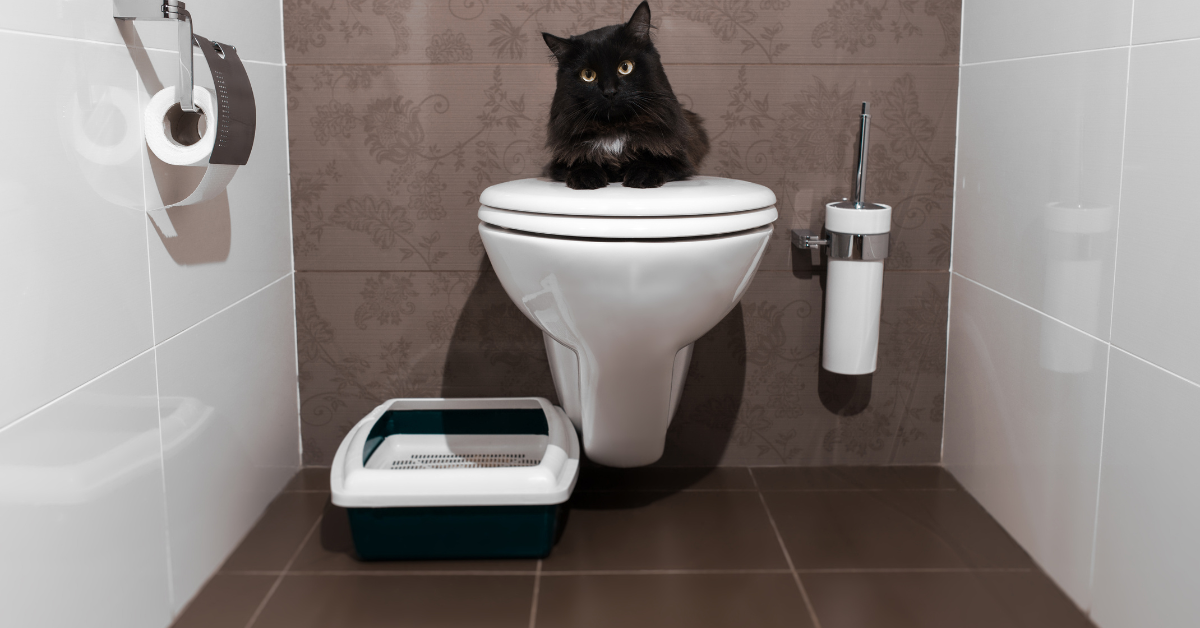The Consequences of Flushing Cat Poop Down Your Toilet - Safeguard Your Pipes
The Consequences of Flushing Cat Poop Down Your Toilet - Safeguard Your Pipes
Blog Article
What're your thoughts with regards to Can You Flush Cat Poo or Litter Down the Toilet??

Introduction
As cat owners, it's essential to be mindful of how we get rid of our feline pals' waste. While it may seem hassle-free to flush feline poop down the bathroom, this practice can have detrimental effects for both the atmosphere and human health.
Environmental Impact
Purging cat poop introduces unsafe microorganisms and bloodsuckers into the water system, posing a considerable danger to marine ecosystems. These contaminants can negatively impact marine life and concession water quality.
Health Risks
In addition to ecological issues, flushing cat waste can likewise posture wellness threats to human beings. Feline feces may contain Toxoplasma gondii, a parasite that can cause toxoplasmosis-- a potentially severe illness, specifically for expecting females and people with damaged body immune systems.
Alternatives to Flushing
The good news is, there are more secure and more responsible ways to dispose of feline poop. Think about the adhering to choices:
1. Scoop and Dispose in Trash
The most usual approach of getting rid of feline poop is to scoop it right into a biodegradable bag and toss it in the trash. Be sure to use a committed trash scoop and dispose of the waste immediately.
2. Usage Biodegradable Litter
Select eco-friendly cat trash made from products such as corn or wheat. These clutters are eco-friendly and can be securely disposed of in the garbage.
3. Hide in the Yard
If you have a lawn, think about burying cat waste in a marked area far from veggie gardens and water resources. Make sure to dig deep sufficient to avoid contamination of groundwater.
4. Mount a Pet Waste Disposal System
Buy a family pet garbage disposal system specifically made for feline waste. These systems utilize enzymes to break down the waste, reducing smell and ecological impact.
Verdict
Responsible animal possession extends beyond supplying food and shelter-- it additionally includes appropriate waste management. By refraining from purging pet cat poop down the commode and selecting different disposal techniques, we can minimize our ecological footprint and protect human health and wellness.
Why Can’t I Flush Cat Poop?
It Spreads a Parasite
Cats are frequently infected with a parasite called toxoplasma gondii. The parasite causes an infection called toxoplasmosis. It is usually harmless to cats. The parasite only uses cat poop as a host for its eggs. Otherwise, the cat’s immune system usually keeps the infection at low enough levels to maintain its own health. But it does not stop the develop of eggs. These eggs are tiny and surprisingly tough. They may survive for a year before they begin to grow. But that’s the problem.
Our wastewater system is not designed to deal with toxoplasmosis eggs. Instead, most eggs will flush from your toilet into sewers and wastewater management plants. After the sewage is treated for many other harmful things in it, it is typically released into local rivers, lakes, or oceans. Here, the toxoplasmosis eggs can find new hosts, including starfish, crabs, otters, and many other wildlife. For many, this is a significant risk to their health. Toxoplasmosis can also end up infecting water sources that are important for agriculture, which means our deer, pigs, and sheep can get infected too.
Is There Risk to Humans?
There can be a risk to human life from flushing cat poop down the toilet. If you do so, the parasites from your cat’s poop can end up in shellfish, game animals, or livestock. If this meat is then served raw or undercooked, the people who eat it can get sick.
In fact, according to the CDC, 40 million people in the United States are infected with toxoplasma gondii. They get it from exposure to infected seafood, or from some kind of cat poop contamination, like drinking from a stream that is contaminated or touching anything that has come into contact with cat poop. That includes just cleaning a cat litter box.
Most people who get infected with these parasites will not develop any symptoms. However, for pregnant women or for those with compromised immune systems, the parasite can cause severe health problems.
How to Handle Cat Poop
The best way to handle cat poop is actually to clean the box more often. The eggs that the parasite sheds will not become active until one to five days after the cat poops. That means that if you clean daily, you’re much less likely to come into direct contact with infectious eggs.
That said, always dispose of cat poop in the garbage and not down the toilet. Wash your hands before and after you clean the litter box, and bring the bag of poop right outside to your garbage bins.
https://trenchlesssolutionsusa.com/why-cant-i-flush-cat-poop/

As a fervent reader about Don’t flush cat feces down the toilet, I think sharing that piece of content was essential. Those who enjoyed reading our blog posting kindly be sure to share it. I truly appreciate reading our article about Can You Flush Cat Poo or Litter Down the Toilet?.
Call Today Report this page